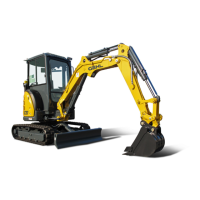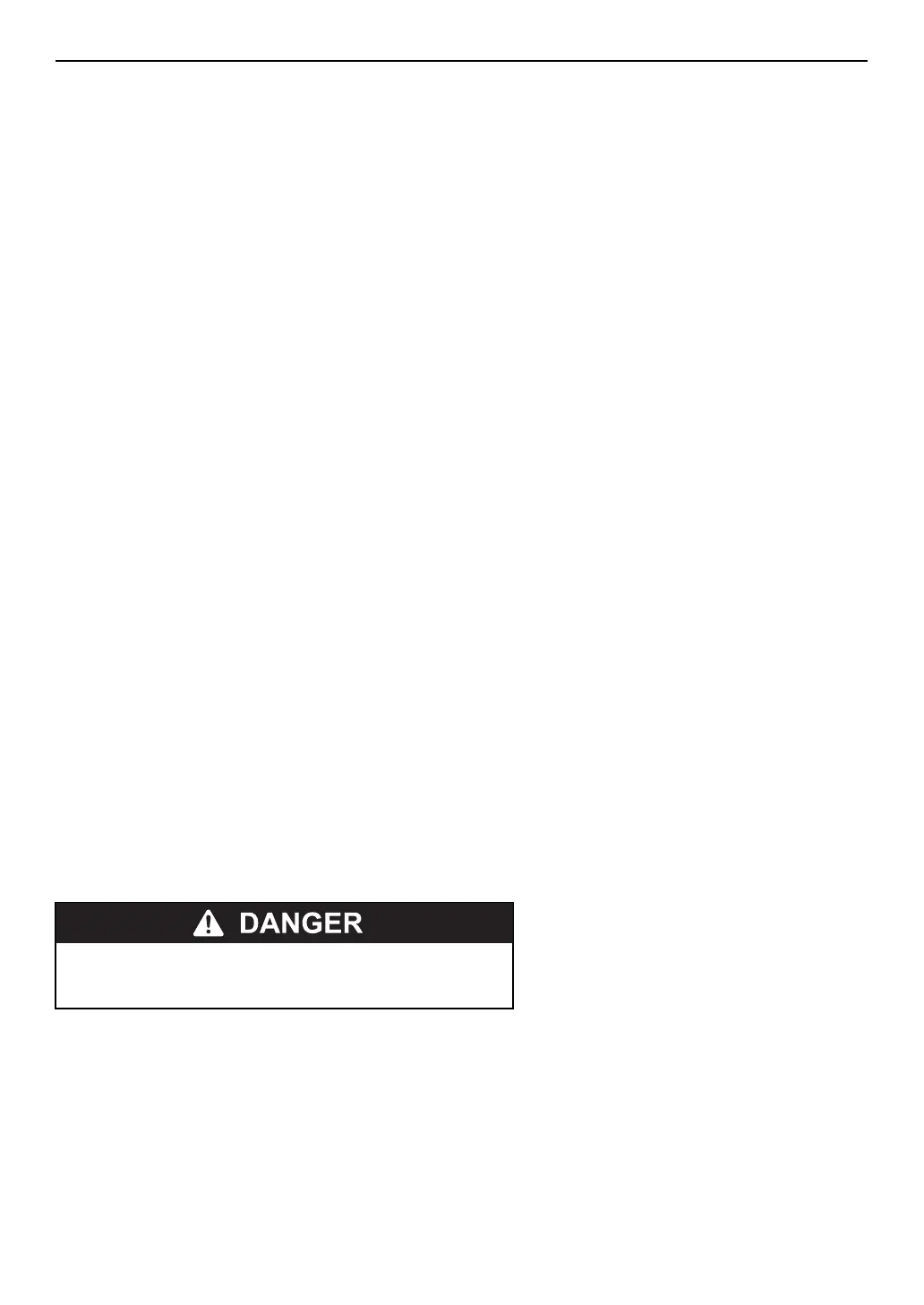19. Basic Servicing Practices
3-8
19-1-2. Fuel
• Because the fuel injection pump is a precision device, using a fuel containing water or dust will cause
problems.
• Be careful that impurities will not be mixed into the fuel especially after storing the machine and refueling.
• Be sure to use a fuel recommended in the Operation & Maintenance Manual.
In addition, keep in mind that you should use a fuel appropriate for the operating temperature range
because it will freeze at temperatures lower than -13°F (-25°C).
• Fully refuel every day after finishing the work so that the moisture in the fuel tank will not condense
and water will not mix with the fuel.
• Before starting the engine, or ten minutes after refueling, drain any deposits and water through the
drain plug on the fuel tank.
• If the fuel level becomes low or the filter element is replaced, the air should be released from the fuel
system.
19-1-3. Cooling water
• Because unpotable water may contain much calcium and impurities, using it will cause water scale to
build up in the engine or the radiator, causing poor heat exchange and overheating.
Never use water which is not potable for cooling purposes.
• When using an anti-freeze, observe the precautions described in the Operation & Maintenance Manual.
• The machine is shipped with anticorrosive anti-freeze. The anti-freeze is anticorrosive to protect the cool-
ing system.
Because the anti-freeze can be used continuously over two years, you need not remove it in hot weather.
• The mixing ratio of the anti-freeze to the water differs based on air temperature.
For the mixing ratio, refer to Section "25-2-5. Cleaning the inside of the cooling system".
• If the engine is overheated, replenish the cooling water after the engine has cooled down.
• Shortage of cooling water will cause the cooling system not only to overheat but also to corrode due
to air which comes in the system.
Keep sources of ignition away from the antifreeze
because it is flammable.

